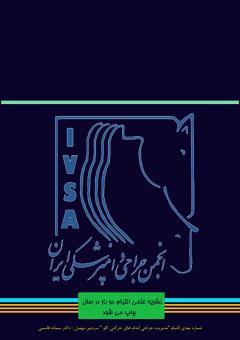Fetal dystocia 1. Obstetrical maneuvers; Dystocia due to postural defects; Dystocia due to faulty position
Subject Areas : Clinical Complications and their Treatments
Niloufar Tashakkori
1
![]() ,
nima farzaneh
2
,
nima farzaneh
2
![]()
1 - Student, Department of Clinical Sciences, Favulty of Veterinary Medicine, Ferdowsi University of Mashhad
2 - Professor, Department of Clinical Sciences, Faculty of Veterinary Medicine, Ferdowsi University of Mashhad, Mashhad, I.
Keywords: Cattle, dystocia, fetal dystocia,
Abstract :
The aim of manipulative procedures in the monotocous species must always be to ensure that the fetus is in normal disposition before attempting delivery. Correction of defects of presentation, position, and posture can be achieved only by intrauterine manipulation of the fetus. Retropulsion of the fetus into the uterus is essential for repositioning it. After diagnosing the cause of dystocia and deciding on a plan of action, the obstetrician should consider whether the available facilities are appropriate, and whether the equipment is adequate to carry out the treatment successfully. In severe forms of dystocia, the veterinarian should always seek the assistance of a professional colleague and consider whether it might be appropriate to transport the animal to a place with hospital facilities, provided that the animal is in a fit state to travel. Obstetrical manipulation per vaginam should be performed as cleanly as possible. It is impossible to perform them aseptically because there will inevitably be some contamination.
1. Noakes DE, Parkinson TJ, England GC. Arthur's Veterinary Reproduction and Obstetrics-E-Book: Elsevier Health Sciences; 2018.
2. Larsen RE. Veterinary obstetrics and genital diseases (Theriogenology) by S.J. Roberts (ed.); 981 pages, $72.00. 1986, 3rd edition. Published by the author, Woodstock, VT 05091. Distributed by David and Charles Inc., North Pomfret, VT 05053. Theriogenology. 1986;26(5):551-2.
3. JC H. Veterinary Record. 1978;102:327.
4. Colburn D, Deutscher GH, Nielsen MK, Adams DC. Effects of sire, dam traits, calf traits, and environment on dystocia and subsequent reproduction of two-year-old heifers. Journal of Animal Science. 1997;75(6):1452-60.
5. Mee JF. Managing the dairy cow at calving time. Vet Clin North Am Food Anim Pract. 2004;20(3):521-46.
6. Severidt J HH, Van Metre D, Garry F. Correction of common abnormal presentations, positions, and postures. CVMBSColostate edu. 2017.
7. Ko J, Ruble M. Using maternal pelvis size and fetal hoof circumference to predict calving difficulty in beef cattle. Veterinary medicine (USA). 1990.


